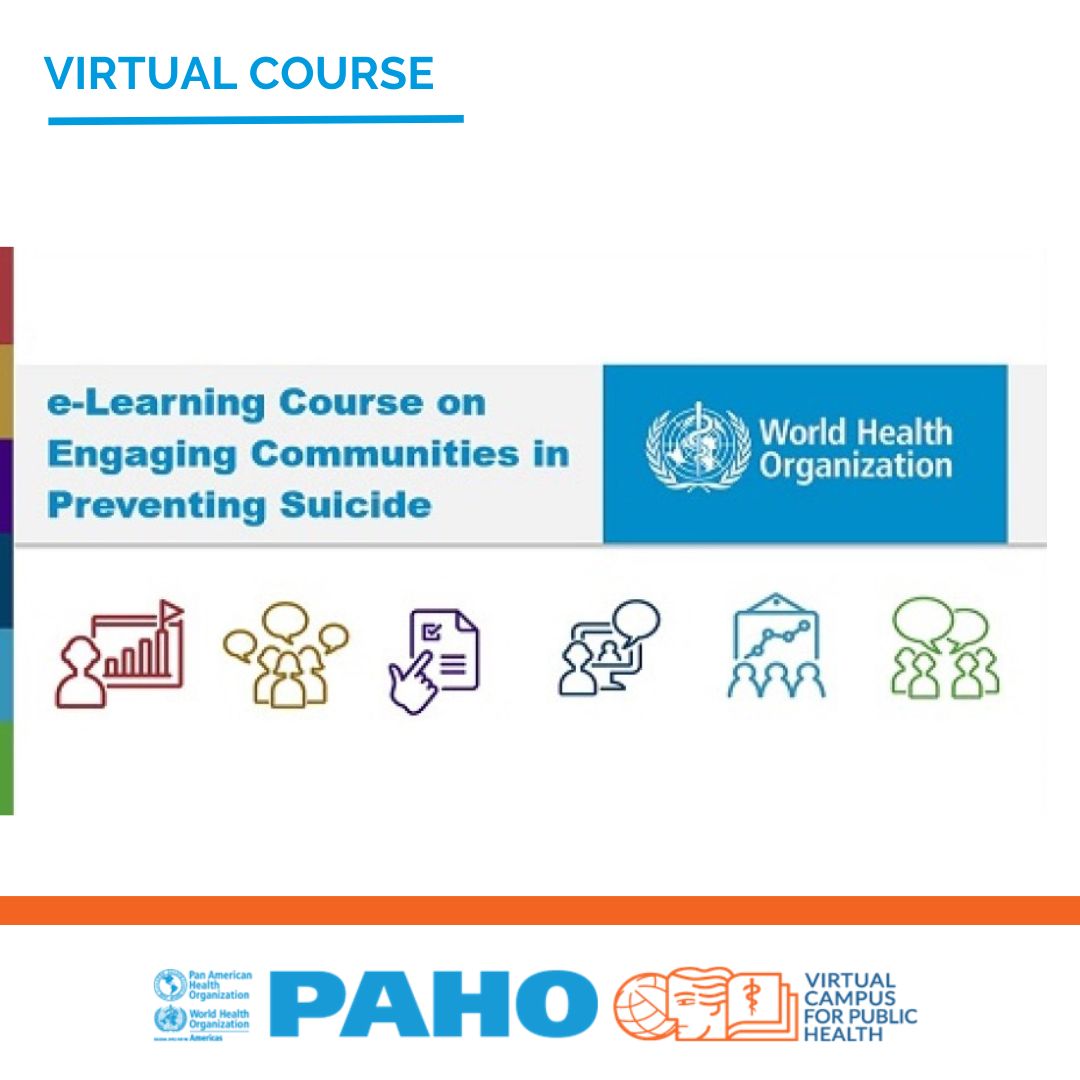Virtual Course on Engaging Communities in Preventing Suicide - 2020

The first e-learning course on Engaging Communities in Preventing Suicide has now been launched.
This e-learning course comprises six modules which cover a step-by-step guidance on how to engage communities in suicide prevention. Each module covers a particular step in the process of developing, implementing and evaluating an action plan for suicide prevention led from within the community. This course is designed for anyone interested in developing activities to prevent suicide in their local community.
PARTICIPANT PROFILE AND PREREQUISITES
Anyone can complete this e-learning course and start developing activities to prevent suicide in their local community, including:
- Community members and leaders
- People in contact with individuals or groups at risk of suicide
- Teachers
- Religious leaders
- Health workers, medical doctors, general practitioners and nurses
- People working in mental health
- People working with young and older people
- People in contact with vulnerable populations, such as: refugees, minorities, persons who have experienced abuse, trauma, alcohol or substance use disorder, conflict or disaster
- Government representatives and parliamentarians
COURSE STRUCTURE
Introduction:
- Learn how the course work
- Understand how community engagement can help prevent suicides
Learning about Suicide:
- Understand basic facts and figures about suicide
- Recall risk and protective factors for suicide
- Clarify myths and misconceptions about suicide
- Identify warning signs for suicide
- Learn ways of reacting to warning signs
Module 1: Initial preparation
- Understand the importance of considering the community environment
- Understand how to foster a supportive environment
- Identify ways to raise awareness about suicide prevention
- Learn ways to start collective action on suicide prevention
- Learn how to plan, organize and carry out the first community meeting
- Understand how to deal with conflict and barriers that might arise
Module 2: Begin the conversation at the first meeting
- Learn about a mapping exercise
- Identify issues that need to be considered in the first meeting
- Learn about the Canadian experience with the #308conversations campaign
Module 3: Create a community action plan
- Examine the key issues and possible community actions
- Map the resources for the possible actions
- Mobilize resources
- Formulate the action plan according to priorities and resources
- Formulate SMARTER goals in the action plan
- Develop an outreach strategy to promote the suicide prevention activities
Module 4: Ongoing mobilization of the media
- Learn about the challenges and opportunities of involving the local media
- Identify the do’s and don’ts of responsible media reporting
- Learn ways of working with the media successfully, from the beginning and throughout
Module 5: Monitor and evaluate the community action plan
- Recognise the importance of including monitoring and evaluation in the action plan
- Learn how to implement continuous monitoring
- Understand the importance of documenting lessons learned
- Learn about qualitative and quantitative assessments
- Learn how to establish surveillance systems
Module 6: Community feedback meeting
- Learn about the importance of conducting a community feedback meeting
- Gather ideas of how a community feedback meeting can be conducted
EVALUATION AND CERTIFICATION
Upon completion of all the modules, participants will need to complete a “Final Exam” of 30 multiple choice questions to evaluate their knowledge.
The Final Exam is designed so that participants can have multiple opportunities to answer correctly until he/she obtains the required score of 70% or higher.
Participants who meet the previous requirements and complete the VCPH quality survey can download their course completion certificate issued by the World Health Organization.
